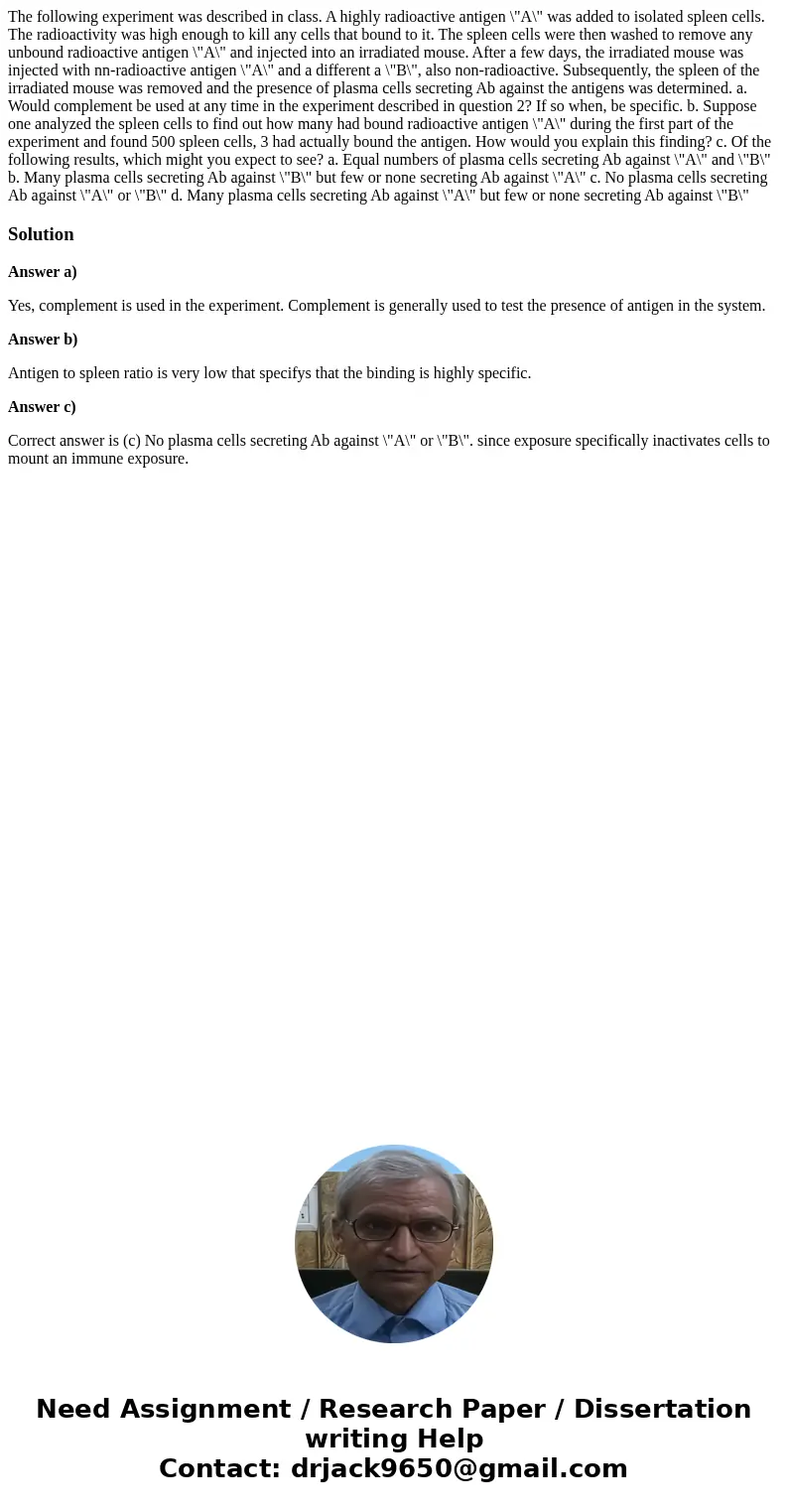The following experiment was described in class A highly rad
The following experiment was described in class. A highly radioactive antigen \"A\" was added to isolated spleen cells. The radioactivity was high enough to kill any cells that bound to it. The spleen cells were then washed to remove any unbound radioactive antigen \"A\" and injected into an irradiated mouse. After a few days, the irradiated mouse was injected with nn-radioactive antigen \"A\" and a different a \"B\", also non-radioactive. Subsequently, the spleen of the irradiated mouse was removed and the presence of plasma cells secreting Ab against the antigens was determined. a. Would complement be used at any time in the experiment described in question 2? If so when, be specific. b. Suppose one analyzed the spleen cells to find out how many had bound radioactive antigen \"A\" during the first part of the experiment and found 500 spleen cells, 3 had actually bound the antigen. How would you explain this finding? c. Of the following results, which might you expect to see? a. Equal numbers of plasma cells secreting Ab against \"A\" and \"B\" b. Many plasma cells secreting Ab against \"B\" but few or none secreting Ab against \"A\" c. No plasma cells secreting Ab against \"A\" or \"B\" d. Many plasma cells secreting Ab against \"A\" but few or none secreting Ab against \"B\"
Solution
Answer a)
Yes, complement is used in the experiment. Complement is generally used to test the presence of antigen in the system.
Answer b)
Antigen to spleen ratio is very low that specifys that the binding is highly specific.
Answer c)
Correct answer is (c) No plasma cells secreting Ab against \"A\" or \"B\". since exposure specifically inactivates cells to mount an immune exposure.

 Homework Sourse
Homework Sourse